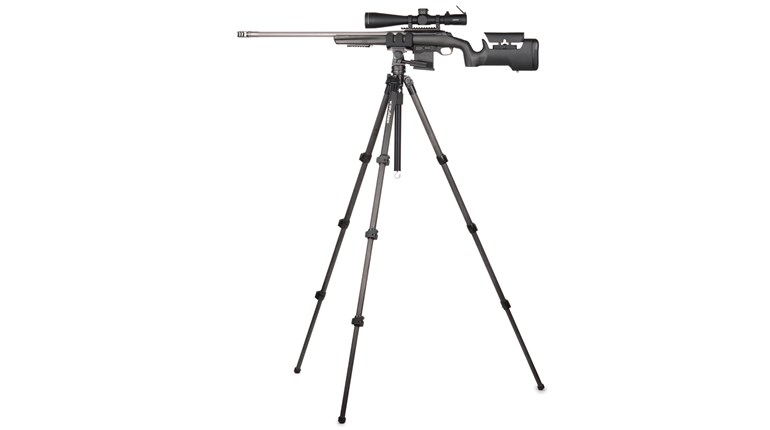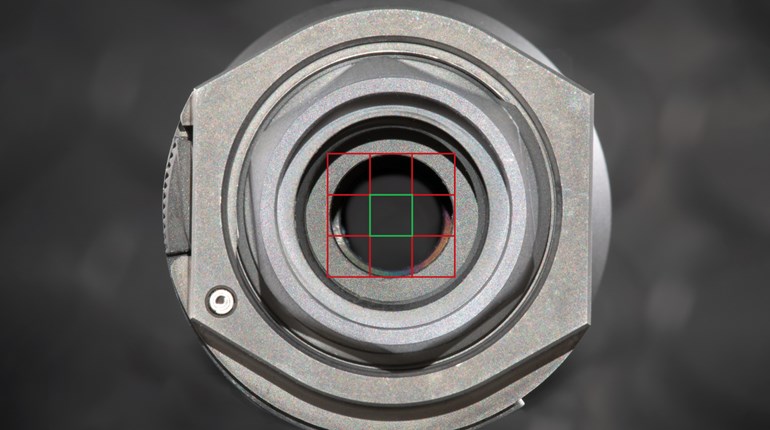
I’ve been called many things over the course of my short, amateur writing career, but “Scoop” is not one of them. In spite of having served in very specialized reconnaissance roles while playing Army in my younger days, I just don’t have it in me to birddog the shooting industry. I should, but I’d rather focus on simpler tasks, like drooling over auction-site firearms I can’t afford or wondering why my pants shrink in the winter but never get bigger in the summer.
Every so often though, I look up from my Combat Mahjong game just long enough to sniff the winds of change. It was during one such interlude that a flashy, new, long-range cartridge made me realize that for the past two decades, the entire rifle-shooting industry has been running in circles, trying to latch onto the tail of the Greatest Long Range Centerfire Rifle Cartridge for Eternity, or GLRCRCfE, for short.
It’s been nearly 20 years since a very svelte .408 wildcat was hyped as the last word in extreme-long-range work. That turned out to be true, as long as your last word is “We need bigger targets and a lot more ammo.” Next came the full maturation of .338 Lapua Mag., which held its own for about 3 days before powder and projectile advancements propelled .300 Win. Mag. into the same sphere. Both of these cartridges were soon left in the dust by .300 and .338 Norma Mags. Somewhere in there, the .260 Rem. was born with its fraternal twin, the 6.5 Creedmoor, holding onto its heel—or was it the other way around? The 6.5 Creedmoor is still popular with the MSR crowd, but it can’t hold a candle to 6.5 PRC in a turnbolt rifle. Then, without warning, the 7 mm PRC popped out of the closet wearing a scary clown mask. Is there a 7.5 PRC hiding under my bed right now?
Helping other members of my Fantasy Gunwriting League answer such questions has made it difficult to get out of my parents’ basement lately. Therefore, I’m going public with the tricks we Gunsperts use to decide which GLLRfRCE(s) to get excited about. Since I’m still on editorial probation for last year’s “Snaphaunce Incident,” I must avoid revealing too many secrets here. Nonetheless, I’ll highlight a few simple screening techniques you can use to separate hyperbole from the science of hyperlonggunformance.
Volumetric Positivity
Don’t worry, there’s no yoga or meditation involved here. Instead, this contrivance dictates that one focus exclusively on the cartridge that has the most positive press. If it seems like one writer or blogger is parroting another—often with decreasing levels of specificity or hard data with each successive parrot—it’s just a coincidence. Journalism schools used to mislabel this as circular reporting, but that’s nonsense. Have you ever tried to report something in a circle? I have, and it’s more painful than watching a member of Congress try to pull themself up by the bootstraps. Bottom line: If everyone says that some new cartridge is It, you can count on that being the GLRfRCOCTE we’ve been waiting for. It’s inconceivable that so many people would report the same results and be wrong … or that anyone would simply repeat what they’ve heard in order to be invited to the best SHOT Show after-parties.
Adjectival Digitarianism
The famous Supreme Court case of .300 Whisper v. .300 BLK demonstrated that even when rifle cartridges seem identical, their names prove they are not. Ammunition people claim that geometric case changes or technological advancements necessitate the shotgun-pattern board of naming schemes they come up with. That sounds reasonable, but it really comes down to the familiar maxim that “He who hires the best marketing people can make things up ‘til the cows saunter back into the kitchen.” For example, if 6.5 Creedmoor is good, 6.6 Creedmore will be better because more of anything is better—except for incoming rounds. Also, the stronger-sounding the name, the better the cartridge. Hence, while 6.6 Creedmore may rule tomorrow, 6.7 Creedmost will reign the day after that.
Anything with “Scorcher”, “Laser” or “Speed of Light” in the name will be your ticket for maximum velocity. If accuracy is your game, pick something with “Precision” or “X-Ring, Baby!” in the title. If you stumble on a .301 PSL (Precision Speed of Light), pick that over the .300 Fair 2 Middlin’ you were about to pull the money trigger on. When considering standard and metric cartridge options, you should always choose metric because it just sounds smarter. A good rule of thumb is that if the tiny Frenchman in your head makes a cartridge sound sophisticated, go with that one.
The Rule of Lateness
Have you ever been ready to dump a month’s wages on the gun and cartridge combo everyone is talking about, only to be pulled away by the smokin’ hot siren’s song of a flashier, newer combo that’s splashed across the cover of every gun magazine? Me neither, but I’ve heard of it happening. Thankfully, the Rule of Lateness is here to help. It dictates that the barrel-burning cartridge which was most recently introduced will definitely be the better one. We can count on this approach to work because there is simply no way that a company would unveil a new product that has no substantial advantage (for the consumer) over an existing product. That would be silly.
Free-Dumb
This one is touchy within the firearm industry, but my duty to anyone who’s still reading compels me to address the elephant in the room: Freebies. If it appears that the person guiding your GfLoRRRCoE quest is pushing a product from someone who gave them free stuff, it’s definitely a fluke. Just because your sage receives regular shipments of “promotional merchandise” or “compensation” doesn’t mean he or she can be swayed. In reality, there’s a lot of free stuff to go around and manufacturers really enjoy giving it away, particularly to those with massive Instatube or Yougram or Friendster followings.
I hope these simple steps help you avoid diving head first into the new hotness that’s about to become yesterday’s fizzle. In the end, the best bet is to just sit back and watch while the multitudinous new, long-range cartridges and ballistic-delivery systems are fleshed out by the (small) handful of people who haven’t read this column. Once the dust settles, you can buy what everyone else is buying and never look back—or forward. You may also want to avoid looking left or right when you’re at the range.





































